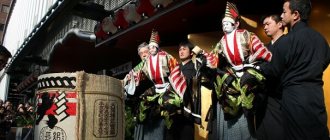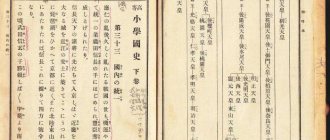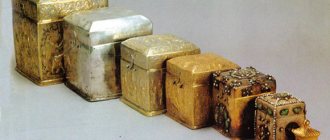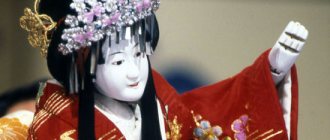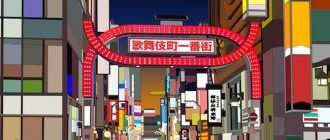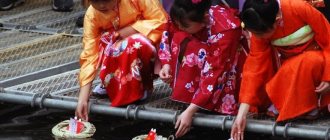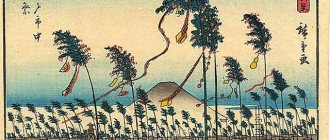Gyaru (gal) is the name of a Japanese subculture that has been popular since the last decade of the last century. The term comes from the English word “girl” – girl. Belonging to a subculture requires followers to look and behave in a certain way. The slogan of the direction is “I can’t live without men.” The phrase was heard in an advertisement for GALS jeans broadcast in the 70s. It was her choice for girls who wanted to look catchy, unusual, bright, defiant.
Modern subculture
Gyaru and their life principles
Gyaru is both glamor and tragedy, fashion and deviation. Representatives of the subculture are called “girls who make the family burst into tears.” They are often referred to as “deviant schoolgirls.” Girls who have chosen this lifestyle look bright, fashionable, and catchy every day. In ordinary places they wear trendy outfits and put on provocative makeup. Every day for them is ease of behavior, self-love, a desire to live in luxury and fun. The life of the representatives of the trend does not tolerate boredom, and their philosophy is based on enjoying every day.
Ordinary Japanese did not learn about who gyaru girls were immediately after the appearance of the trend. The first manifestation of female sexuality in the Land of the Rising Sun occurred in the 20s of the last century, but the trends did not find public support. An overly enslaved society did not allow Western trends to penetrate, and emancipated individuals were subjected to condemnation, ostracism, and harsh criticism. The first large-scale wave of popularity occurred in the 70s. Glossy publications began to publish photographs of young people partying, fashionably and expensively dressed, who chose a nocturnal lifestyle. The appearance of stylish images on the covers of popular magazines has become style's ticket to everyday Japanese reality.
Subculture as a result of emancipation
The history of the emergence of the subculture
Gyaru (and also ganguro, kogyaru), known for their disdain for social taboos, passionate about Western values, live by the motto “Long live I!” Since its earliest days, this subculture has been part of Japanese street fashion. Men who follow the direction are called gyaruo.
The origins of the trend are in the fashion of the 20s. It was then that brave Japanese girls appeared who chose Western style. In these circles they listened to jazz and neglected traditional feminine values and accepted norms of behavior. Condemnation and social pressure destroyed this wave already in the 30s. In the 60s, sorority freedom again became a hot topic, but only in the form of occasional speeches.
There is no exact date for the appearance of the style in Japanese history. According to many, this movement came out of nowhere and became a response to society's readiness for change. In the 70s, the first thematic magazine Popteen appeared, which soon gained cult status among women. Later he was competed by Happie, Street Jam and some others. Mostly the publications were created by people from the porn industry. In the 80s, gyaru became strongly associated with Yankiis. This is how kogyaru appeared - expelled from schools due to the discrepancy between their clothes and the accepted uniform of a Japanese woman. These girls emphasized their independence and spent time in Shibuya, where they were often the focus of famous photographers' lenses.
The movement comes from the 20s
In the 1980s, the word gyaru became associated with obscene behavior and a consumerist lifestyle. Thematic publications began to write about teenage sex, attracting young people interested in Western thinking. 1984 was marked by the fact that the term gal began to be applied to those who are characterized by promiscuity. He was strictly negative. At the same time, the trend was popularized by men's magazines, which included TV show stars in the subculture.
In the 90s, singer Namie Amuro became popular and set the gyaru trends for a long time. She wore short skirts and high boots and sunbathed in the solarium. In 2009, she received the status of a Japanese fashion icon. Many girls from different regions of the country copied her appearance. This fashion has spread to Russian fandom. The singer's fans were nicknamed Amuraa. At the same time, the word gal is used more widely, which describes girls whose life priorities are expensive clothes, nightlife, sex. Outside of Japan, the image becomes an erotic fetish.
The growing popularity of the subculture is associated with trends in the media. At first, representatives of the movement were considered office workers who wanted a beautiful life, but in 1993 the article “Tack Structure” was published, explaining the essence of the movement, focusing on materialism and the idealization of the nightlife of the rich. Descriptions of kogyaru began to appear in articles about sexuality and the nightlife of celebrities. Also in 1993, the article “The Temptation of Kogyaru” appeared, dedicated to sexual interest in girls 14-18 years old, and a little later - material about the sale of sexual services by schoolgirls. Paid dates caused a wide resonance, because of which gyaru in the minds of the average Japanese was firmly associated with prostitution. In 1997, a documentary was released showing followers of the style as prostitutes who only wanted expensive things. Teachers, monks, major bosses, and officials have been brought to justice more than once for using the services of girls.
The history of the subculture is associated with scandals
The economic crisis of the 90s provoked a surge of interest in a bold lifestyle. Radical feminists used the subculture as a weapon in the war for freedom and position in society. Sociologists have associated the phenomenon with discrimination against women; the famous writer Ryu Murakami characterized it as a rebellion, a call to fight against the decline of morals. The gyaru themselves suffered from the popularization of the trend, since only a few of those who adhered to the subculture practiced paid dates and the provision of sexual services, but indecent offers, threats and social ostracism applied to everyone.
At the turn of the century, Shibuya in general, and the 109 department store in particular, became the premier destination for kogyaru. The trend has become part of the mainstream, an ideal for young people dreaming of wealth. In the first decade of this century, ganguro appeared - people from disadvantaged areas of Tokyo, visitors from other cities, preferring a very strong tan, traditional lipstick and bright hair. The split became a confrontation between the children of rich parents and those from poor families. Ganguro wore cheap things, and kogyaru was captured by Shinjuku and Ikeburo, but the term gradually faded into oblivion - both ganguro and kogyaru are now characterized as gyaru. In the middle of the decade, gyaruo men appeared among the representatives of the movement.
The popularization of the subculture provoked the extremalization of fashion. To avoid unwanted attention from adult men, many have switched their sexuality to a shocking style dubbed “witchy” in the media. In 2003, the Arubaka appeared - not very smart girls wearing exclusively ALBA ROSA clothes. Later, the hime-gyaru movement was formed, copying the style of the princesses.
Gyaru is ganguro and kogyaru
Features of the gyaru image
In the 90s, singer Namie Amuro shone on stage and television in Japan. It was she who contributed to the promotion and consolidation of the gyaru image. Her popularity among young people broke all records. So the following aspects became the attributes of the gyaru style:
- Short skirts;
- Knee-high boots;
- A large amount of cosmetics on the face;
- Heavy tan;
- Bright clothes;
- Hair of light and brown color;
- Frivolous behavior;
- Visiting parties and discos.
Taking the most luscious accents from the Western lifestyle, gyaru girls have become popular in the West. Their image has become a kind of sexual fetish not only for Japanese, but also for Western men.
Gradually, the term “gyaru” was replaced by the definition “kogyaru”. There is a theory that nightclub bouncers in Japan were the name given to teenage girls who tried to get into nightclubs to get a glimpse of adult life. The term was fixed by fashion publications; now it meant girls from 14 to 18 years old who tried to look and behave like adult gyaru.
Later, gyaru began to be equated with simple prostitutes due to the practice of paid dates in their culture. The Japanese media again contributed to this.
After such a statement, many girls began to be accused of inappropriate behavior. A wave of arrests of officials, monks and teachers suspected of connections with Kogyaru swept across the country.
The increasing materialism of Japanese society complicated matters. After all, kogyaru and gyaru did not want to become mothers. They, most often, performed their parental responsibilities poorly or abandoned childbearing altogether.
In the 90s, the number of girls who wanted to participate in paid dates increased to 34%. Among them were many underage schoolgirls.
Prominent Japanese sociologists of that time tried to explain the kogyaru phenomenon in different ways. Some believed that this was a protest of women against their discrimination. Others thought that the philosophy of consumption and irresponsibility was to blame. Society has put too much pressure on women for centuries, and they made their protest public.
“Kogyaru and gyaru themselves did not consider themselves prostitutes. They were amazed at how quickly they were labeled. The girls complained that men would approach them when they saw their blond hair and immediately start bidding. But that’s not what their practice of paid dates was, according to gyaru and kogyaru. Dating had to be preceded by communication. "Paying for sex was perceived by girls as a way to gain equal rights with men."
In addition, teenagers who agreed to have sex right away were often perceived by their peers and society as outsiders. Such contradictions were due to the emergence of a youth movement.
Features of the image
Characteristic features of the gyaru appearance:
- black, white eyeliner;
- an abundance of jewelry;
- false eyelashes;
- long bleached or brightly colored hair;
- strong tan;
- a thick layer of foundation;
- light makeup;
- short skirts;
- provocative clothing;
- Wellingtons;
- color contact lenses.
Some believe that these appearance features are associated with anime-specific images of African Americans. The popularity of hip-hop played a role. Gyaru resemble Californian beach girls, conflict with traditional Japanese ideas of beauty and behave frivolously.
The girls look very catchy
A characteristic feature of the subculture is the special slang gyaru-moji. Representatives of the community use borrowed words, foreign endings, and Latin abbreviations of Japanese phrases.
Subculture split
The split began when young people from poor areas joined the subculture of people from wealthy families. The new branch of ganguro was mainly formed by teenagers from Ota, Kamata. They bought inexpensive clothes and behaved boldly and brightly. Carefree girls attracted guys to the movement. This is how the Garuos appeared with fashionable haircuts, stylish manicures and bright hair. For Westerners, Garuo is synonymous with metrosexual.
The mixture of gyaru and lolita gave birth to the hime-gyaru movement. It has been relevant since 2007 and is characterized by a combination of fairy-tale images and modern glamour.
There are several branches of the subculture
Gyaru
The subculture has many branches, such as kogyaru, ganguro and others. This fashion originated quite a long time ago: back in the seventies or even earlier. However, even now it is quite popular. You can tell a lot from its name alone. The word "gyaru" is a corruption of the English word "girl", that is, "girl". It follows from this that this is a female subculture of imitators of the West.
However, young Japanese women can choose quite radical methods of Americanization. More capable offshoots, like the Kogyaru, simply do not respect the traditions of the country and dress in Western fashion. But ganguro... They are characterized by hyperbolization. Tons of self-tanning, ridiculous stereotypical clothing and behavior, bright hair, strange makeup - these are the things that build their style.
@Papillon Magazine
As you might guess, gyaru fashion is close to the history of Harajuku. Japanese girls were tired of the strict foundations of the country, so they wanted to break the rules and emulate not their ancestors, but foreigners. Because of this and some dark moments in gyaru history, the style is not held in high esteem in Japan.
How popular is the subculture?
Now the audience is less numerous than at the beginning of the century, but still quite diverse. This reflects the world of gyaru. A special place in it is occupied by Shibuya, department store 109. It has been operating since 1979 and is considered the mecca of gyaru. The place is a cult, even the fact of purchasing clothes here makes a buyer a kogyara.
The popularity of the subculture is reflected in special publications. Egg, Popteen, Happie Nuts are produced for gyaru. In 1994, Street News, Kawaii appeared. In 2000, the publication of Ranzuki magazine began, aimed at a teenage audience, lovers of a very dark tan.
Gyaru is part of Japanese society
Anime and manga about gyaru
The most famous manga about the subculture is Hajimete no Gal. Ueno Meguro's work is published in Shounen Ace. An anime adaptation appeared in 2017. The plot tells about a high school student who confesses his feelings to a girl on his knees. The main character's classmate is gyaru; Despite the awkwardness, she accepts the offer.
Images of gyaru can be seen in the works of:
- Cool Teacher Onizuka (unnamed girls);
- Nana (Nami Komatsu);
- Pretty Woman (Momo Adachi);
- Baby in the Kitchen (Miku Okazaki);
- Season of the Restless Maidens (Sonoe Jujo);
- Jet Girls of Kandagawa (Manatsu Shiraishi, Yuzu Midorikawa);
- Citrus (Yuzu Aihara).
Hajimete no Gal
A Few Words about Gyaru Manga
Despite my desire to make video reviews of manga, I often encounter a simple lack of time and energy for selecting material and editing. And because of this, a couple of texts have become so outdated that some of the manga series in them have already ended. Therefore, for now, let’s try to return to the article format. And where to start, if not with one of my favorite types of heroines: “Gyaru”.
A few words about Gap Moe and Gyaru culture
But let's step back a little. Recently, in the discussion of manga and anime, the term Gap Moe . Despite the fact that it does not bring anything new in itself and, at the level of character archetypes, has existed, in fact, since the birth of moe culture. The essence of the term is that the charm of a character is hidden in the discrepancy between his actual behavior and what is expected from his appearance and past actions.
Let's consider this question using the example of the tsundere archetype. A tsundere character has two critical states by default: tsun-tsun and dere-dere. One is a prickly and aggressive person, and the second is an often hidden true nature. And there is a gap between them, most often consisting of the suffering of the character who is the object of the direction of the tsun and dere. And the larger this gap, the, theoretically, the greater the moe... and torment of the protagonist and the audience.
But in recent years, Gap Moe has become much more often applied to a rather specific archetype of characters, previously usually found in supporting roles, and sometimes even in the form of minor antagonists - gyaru .
The stylistic movement of “Gyaru” began to take shape back in the seventies and eighties among young Japanese girls who tried to actively follow Western fashion, both in clothing and behavior. The term “gyaru” itself, derived from the word “girl”, came into use only in the nineties.
In the popular imagination, gyaru is most often associated with a provocative, if not downright vulgar, style of clothing and makeup. And since they meet people by their clothes, gyaru are most often perceived as vulgar and rude individuals. And this is where Gap Moe lies, when a sweet and naive girl is hidden under a bright mask.
And for several years now, more and more series have been appearing that focus on gyaru as the main characters. Of course, among them there is also quite frankly trash, like the already filmed Hajimete no Gal , or Gal☆Cleaning, which should be whitened from the eyes and memory! (for details here and here), but there are some that are quite worthy of attention. Let's talk about them. And no, this is not a fetish. What... what are you thinking about?
Ijiranaide, Nagatoro-san / Don't mock me, Nagatoro-san
Imagine that Takagi-san, in her attempts to attract Nishikata’s attention, and at the same time educate him in the necessary aspects, went too far. So much so that instead of sweet jokes and teasing, her actions border on outright bullying. This is Nagatoro-san. And before you run away, there are no nasty things in the manga. Before us is just a girl trying to turn the guy she likes from a dead guy into something more or less digestible, but doing it using the methods of a primary school student. And she generally succeeds, because initially the protagonist, whom we have known for a long time only under the call sign “Senpai,” really began to grow balls, and is no longer as susceptible to nudges as from Nagatoro (who has become much softer over time ), and from her friends. And the manga concentrates much more on the naive sweetness of a girl with a psychopathic look and noodle-shaped hands, trying to attract the attention of a not very distant young man, and at the same time ward off her miger friends from him.
Well, yes, a film adaptation awaits us soon. And if the intensity of the mockery in the first episode is reduced compared to the manga, then it could turn out to be quite a top series.
Sono Bisque Doll wa Koi wo Suru / This porcelain doll fell in love
Wakana Gojo, the grandson of a master maker of traditional Japanese dolls, dreamed of continuing the family business since childhood. And not only because of a sense of duty, but also sincere admiration for the beauty of the dolls. But such hobbies led to Wakana feeling like an outcast, and almost did not communicate with anyone at school, until Marin Kitagawa, the brightest gyaru in the school, approached him with a request for help.
Bisque Doll is a pleasant exception against the general background of stories about gyaru. The main theme here is not the girl’s attempts to attract attention, but the bringing together of people against the backdrop of common interests: in this case, clothes. Marin is a novice cosplayer who is helped by Wakana, who has cut his teeth on costumes for dolls. And, in fact, apart from Gojo-kun’s complexes against the backdrop of a childish rejection of other people’s hobbies, there is no conflict in the manga. It's just a very sweet and relaxing story about the development of a relationship, seasoned with Marin's wonderful logic.
Well, damn it, what other series will you see official cosplay of a cosplaying manga heroine?
Gal Gohan / Maiden Rice
All the teachers at school gave up on Mika Okazaki. In their eyes, the girl is not capable of anything except following fashion. When Miku once again failed all her exams, the director suggested that she somehow improve the situation by bringing homemade cookies to the teachers as a gift. But since the girl doesn’t know how to cook either, she turned to a new teacher for help: Shinji Yabe. After many unsuccessful attempts, Miku was finally able to bake cookies, and Yabe, admiring her perseverance and sincere joy in success, decided to open a school culinary club. And naturally Okazaki instantly joined him, because Shinji is the first teacher who believed in her and tried to help her become better.
Gal Gohan is actually a rare manga in which the protagonist's narrow-mindedness is justified. Yabecchi simply does not want to go to prison for seducing an underage student, and therefore carefully ignores reality as much as physically possible. And since it’s impossible not to fall in love with the charming, diligent and, let’s be honest, sexy Okazaki, one can only envy a person’s resilience.
But with all this, Gal Gohan is not perceived from a purely romantic side (despite the fact that Yabecchi actually organized a small culinary harem). To a much greater extent, this is the story of Okazaki, trying to find and realize herself through cooking. The girl finally found something in which her efforts achieved success, albeit sometimes after repeated attempts. And it’s a joy to watch her work. This is a surprisingly solid, complete manga, even if its protagonist is under constant threat of imprisonment.
Dosanko Gyaru wa Namaramenkoi / Dosanko-gyaru is wonderfully cute
A native of Tokyo, Shiki Tsubasa is forced to move to Hokkaido to live with his grandmother due to his parents' long business trip abroad. Where he first meets the amazing girl Minami Fuyuki, dressed in a miniskirt with bare legs, despite the eight-degree frost and knee-deep snowdrifts. This is how the young man first became acquainted with the local gyaru, or as they say in Hokkaido: “Dosanko”.
A relative newcomer, now officially released on MangaPlus - “Dosanko-gyaru is wonderful as sweet” is actually a story of the development of love against the backdrop of culture shock. Shchiki, pulled out of his usual habitat, runs into a blond miracle in a skirt. This miracle, unlike the protagonist, is open and sociable. And with his charm he instantly conquers Shchiki’s thoughts, simultaneously helping him integrate into a new life. This is an extremely cohesive piece of work that doesn't try to be anything more than a simple rom-com with a few cute heroines. Both Minami herself and Sayuri and Natsukawa-senpai, who appear later, fully justify everything that happens. In addition, Shchiki is far from being the fastest. He is, of course, an introvert and slow, but still much more proactive than many other protagonists from the genre.
Kaette kudasai! Akutsu-san / Please go home, Akutsu-san!
Young Ooyama has one pressing problem: the main bully of his class, Akatsu, having found out that he lives alone, began hanging out in his classmate’s apartment after school. Any other person would be happy about this: a completely sexy girl hangs out exclusively with you in your own house, but Ooyama is still an OYASH, and besides, he doesn’t really like the fact that Akatsu often uses him as a messenger. That’s why he wants the girl to get ready to go home.
Okay, it’s more correct to say that Akutsu-san is more of a “Yankee” type than a “Gyaru”. But my list, I do what I want, and she deserves her place of honor. Because here's the thing. Chapters in Please Go Home, Akutsu-san! very short. Sometimes it's only three or four pages. But during the accumulated first volume, progress in relationships occurred such that it does not happen in individual mangas throughout the entire serialization. Ooyama, initially shy of the girl, relatively quickly stops taking her teasing by pouring paint on him. No, he’s quite accustomed to the heroine’s sex appeal and takes it for granted. And Akutsu herself soon realized that, in general, she goes to visit a classmate not only because of convenience and freebies. And, in fact, already from the second volume the manga is perceived more like the dating of a couple who simply have not yet realized that they are dating. And watching the gradual but steady development of their relationship is pure pleasure.
And this is far from an exhaustive list of interesting gyaru manga, and we can only be glad that an interesting trend is gaining momentum, even if it sometimes misfires like Gal☆Cleaning!

